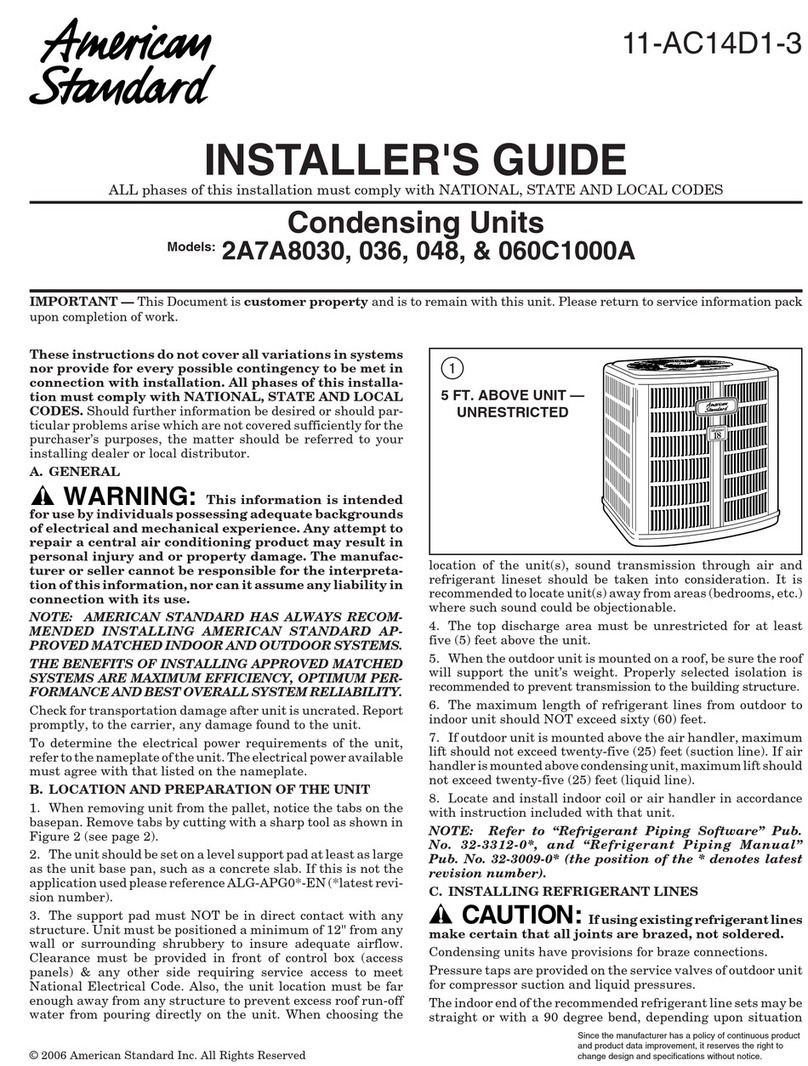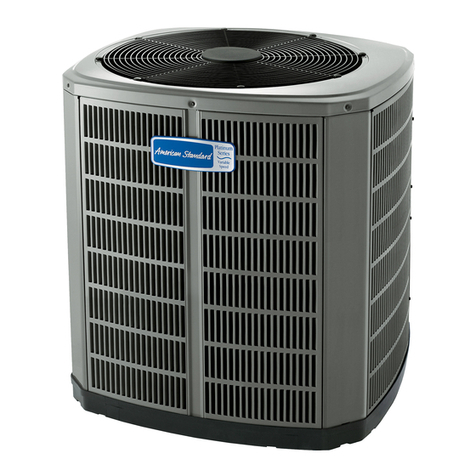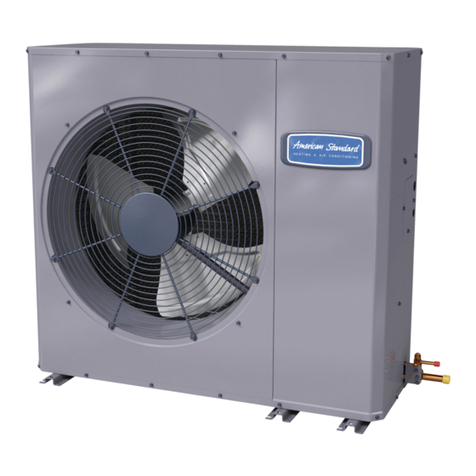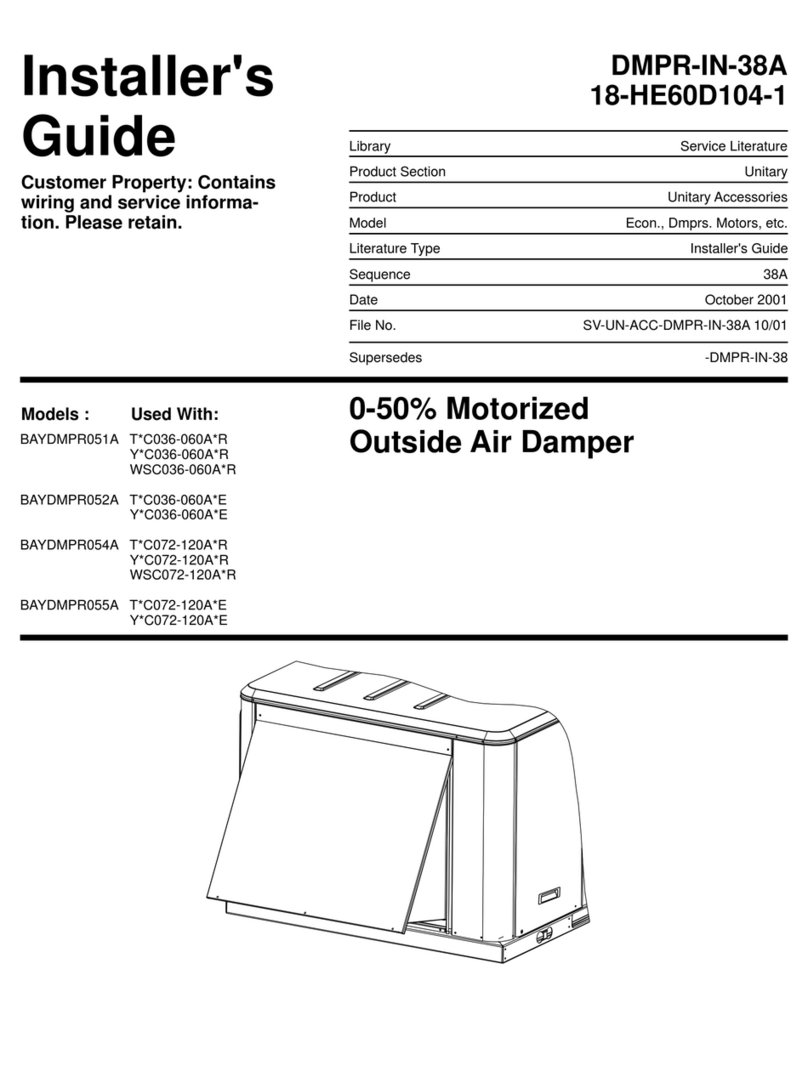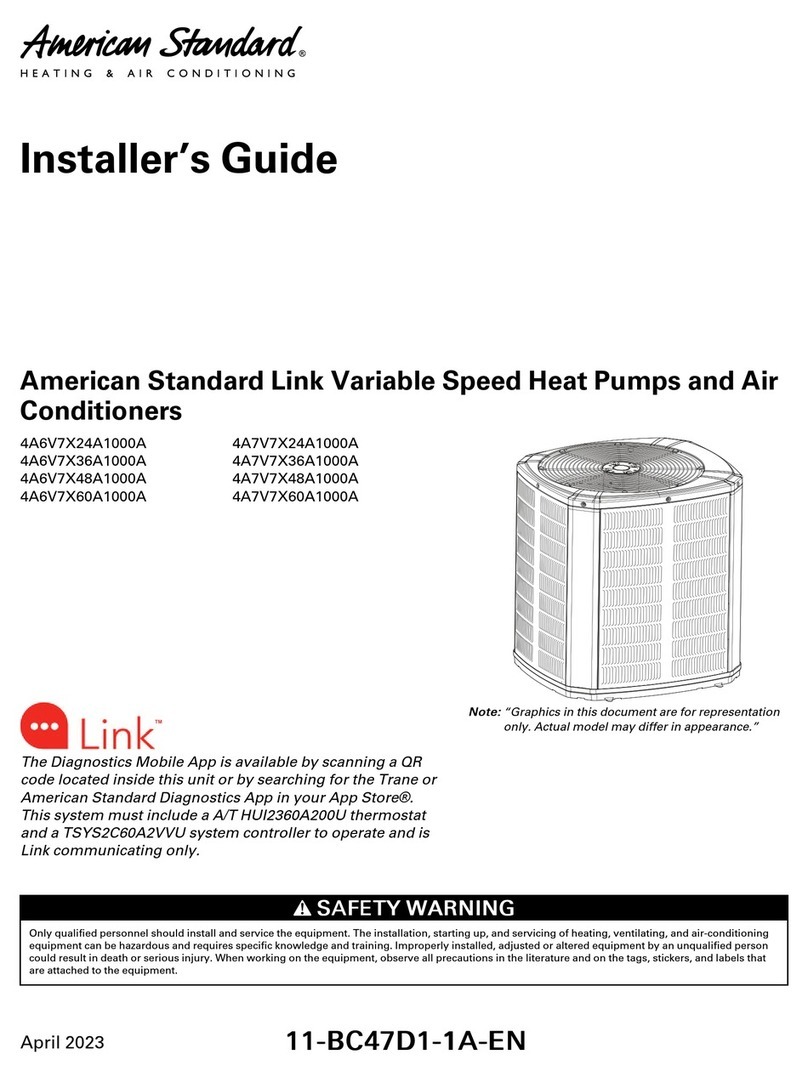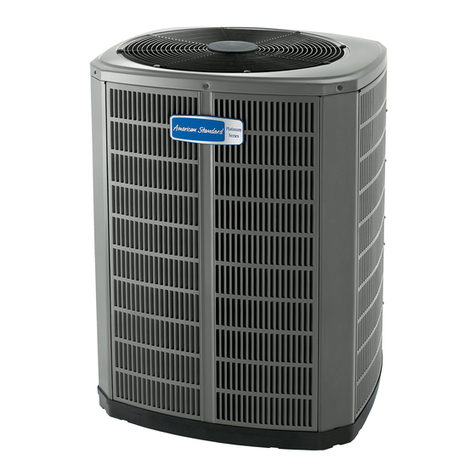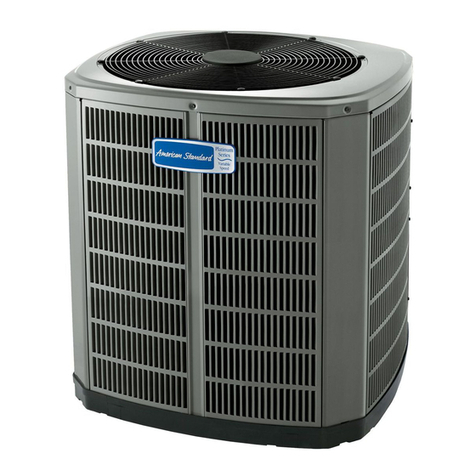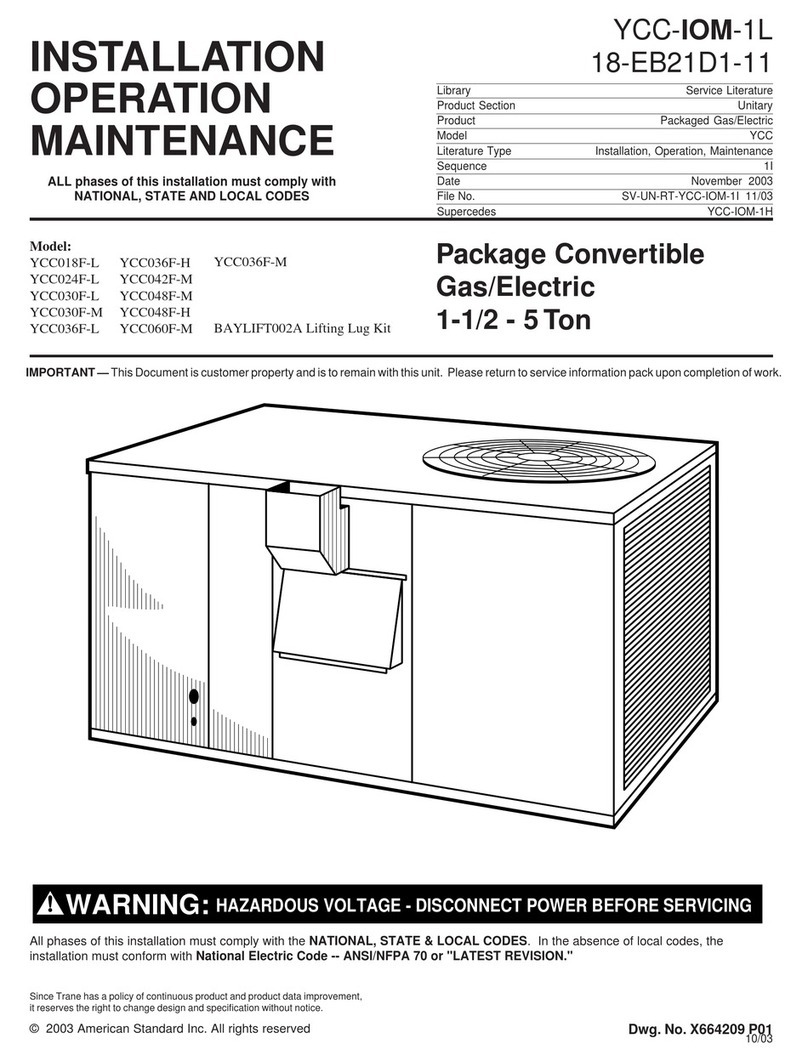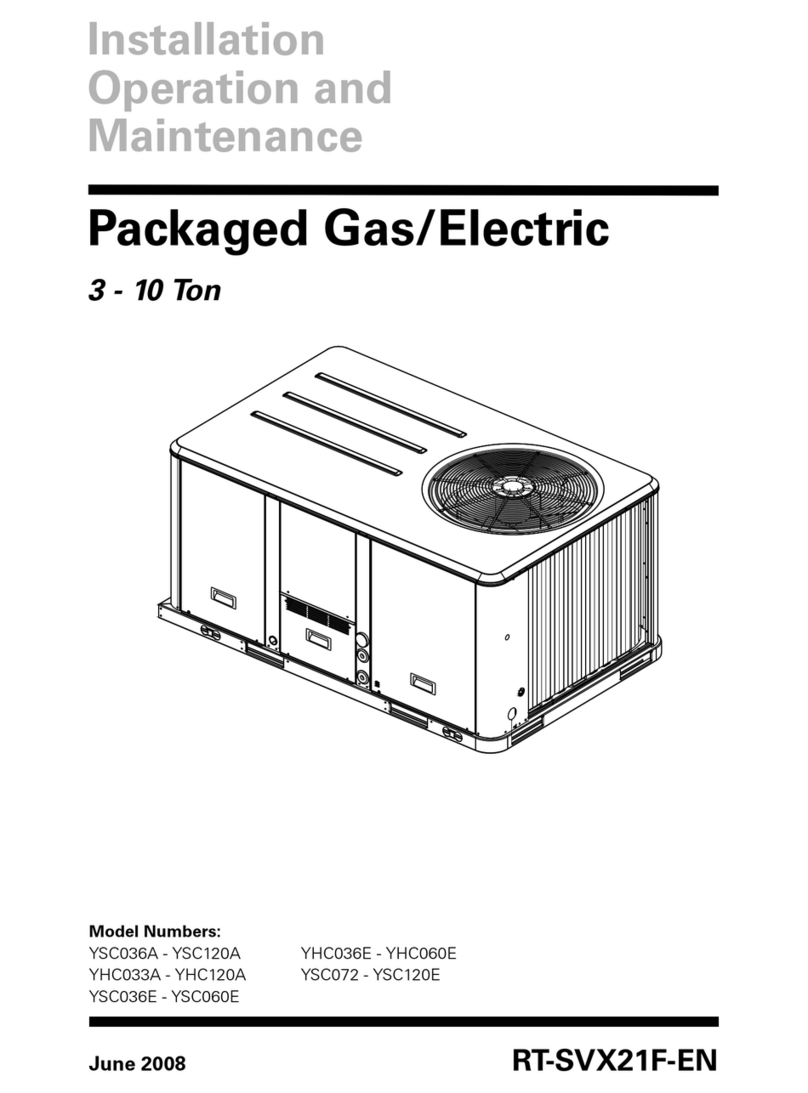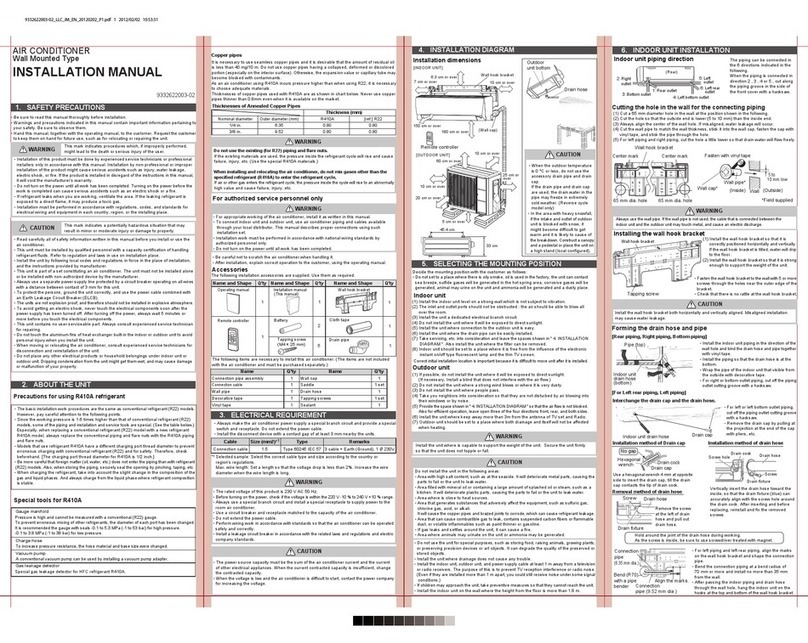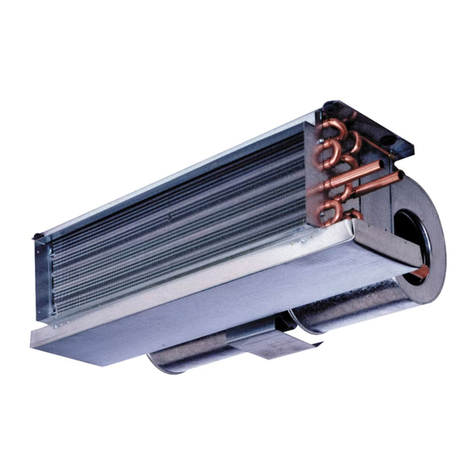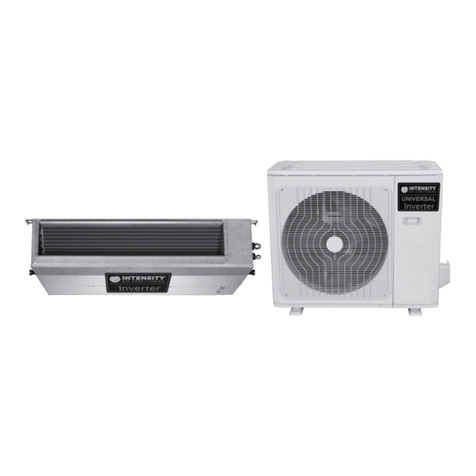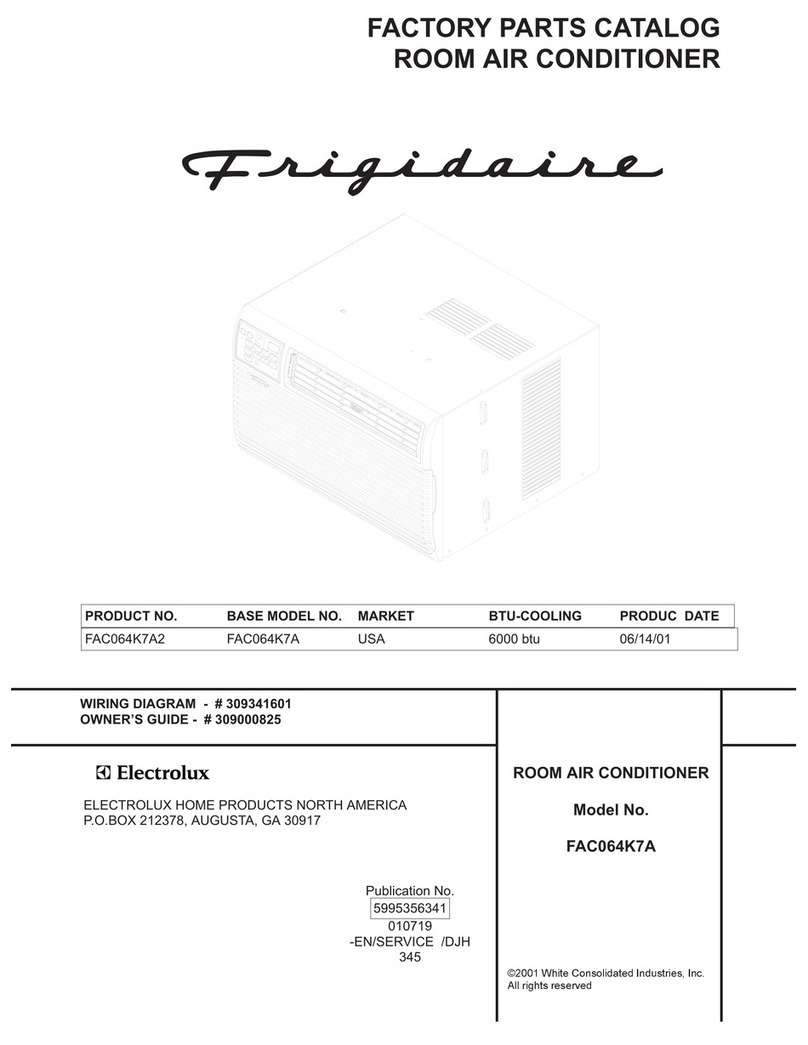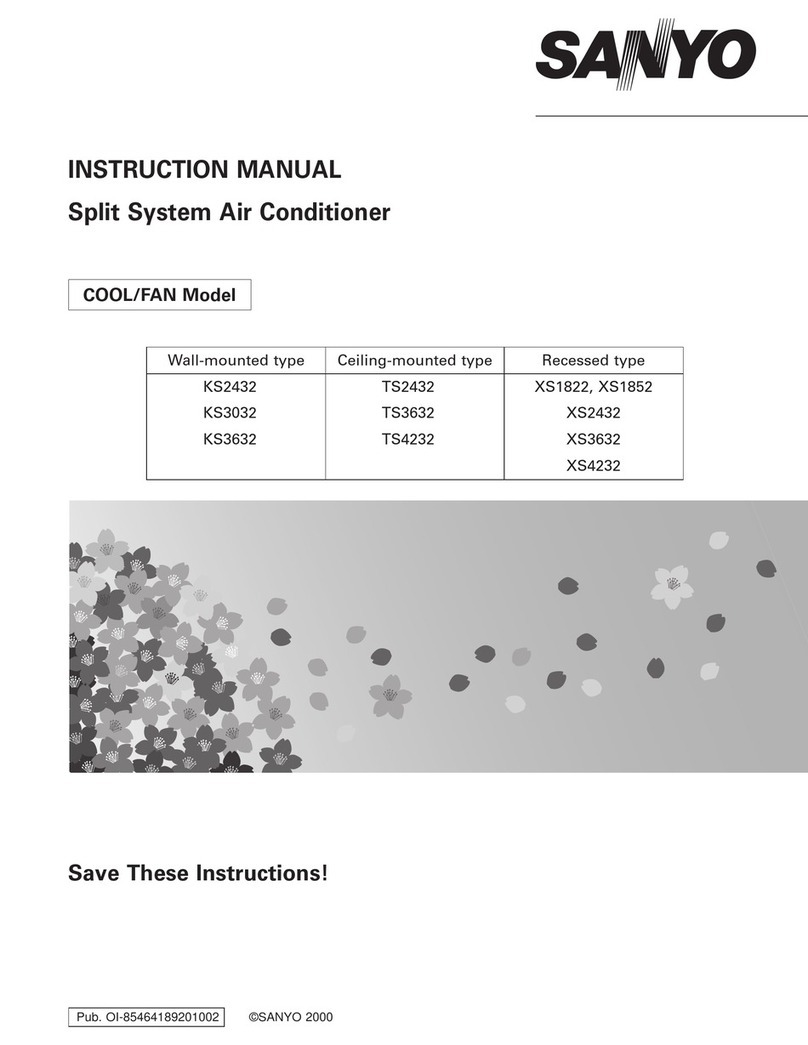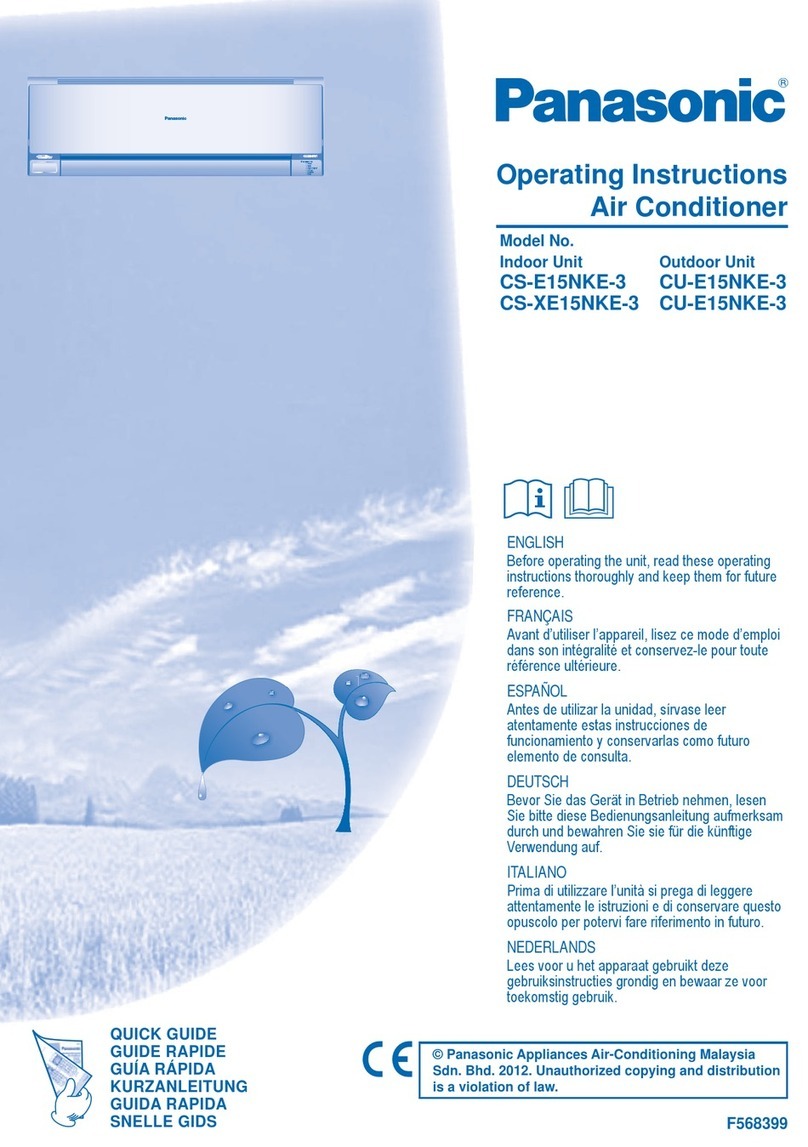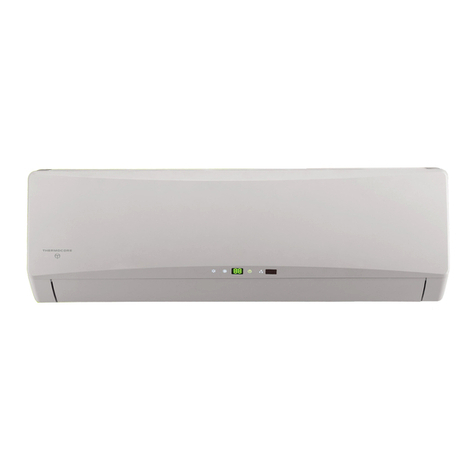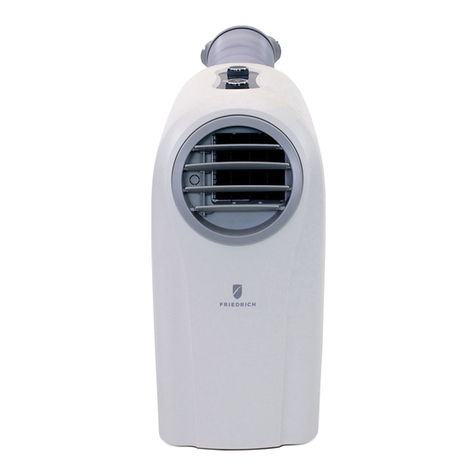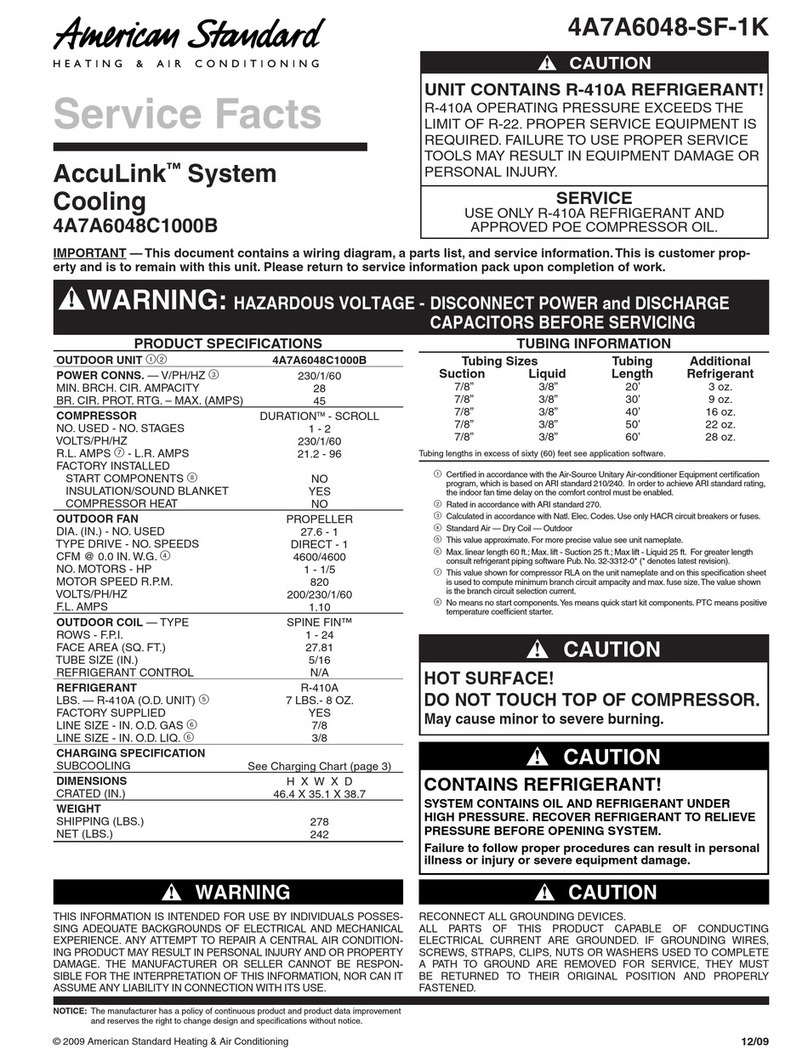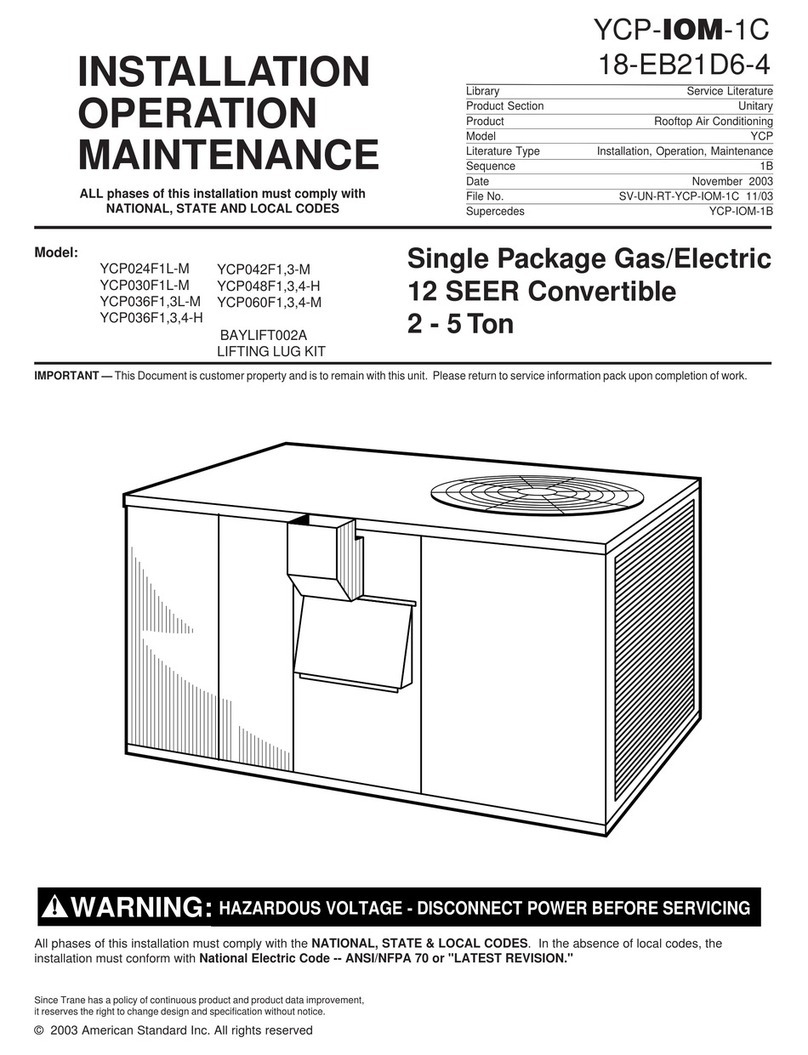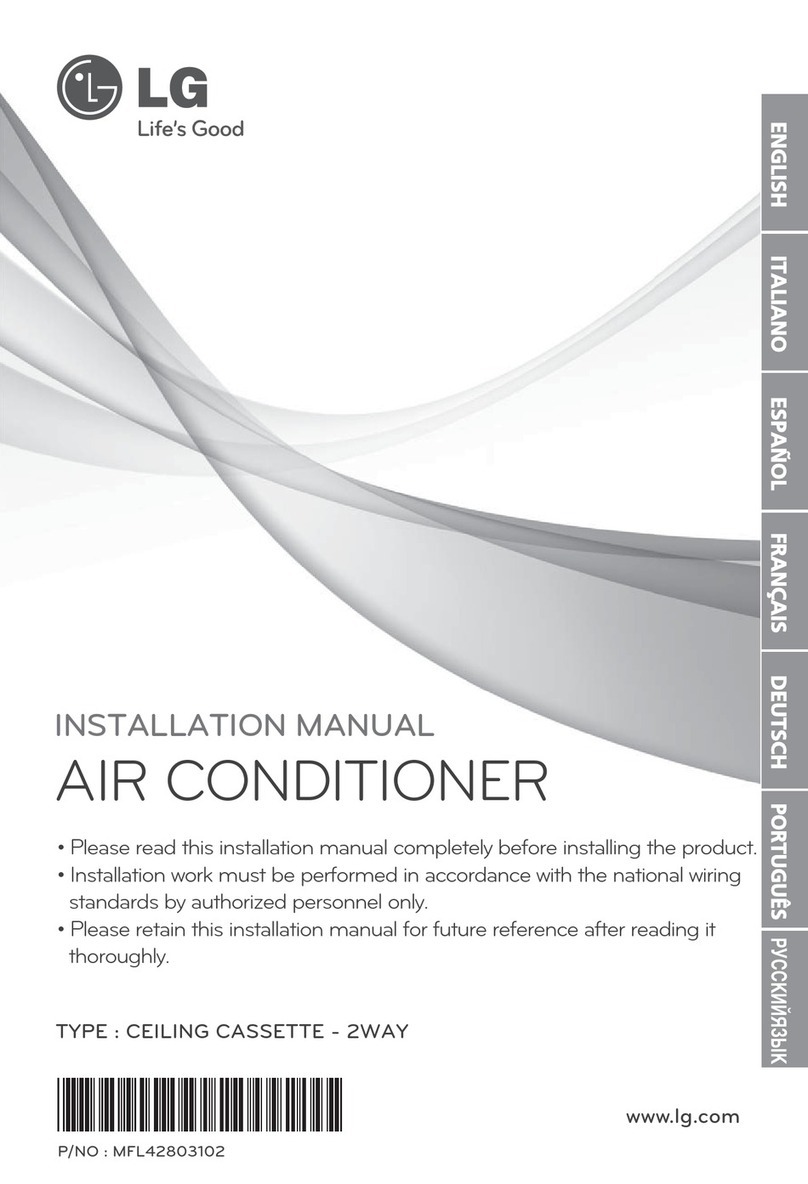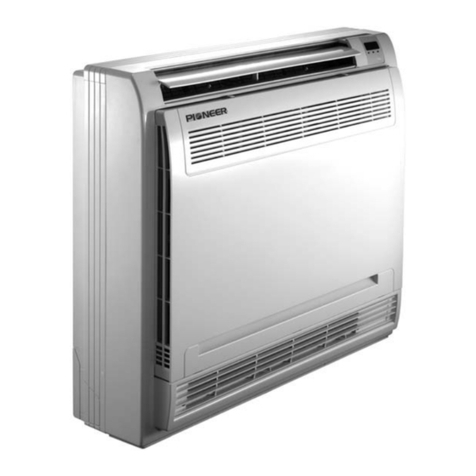
10 TTA-SVX03A-EN
Installation
CAUTION
Equipment Damage!
Do not remove the seal caps from
refrigerant connections, or open the
service valves until prepared to braze
refrigerant lines to the connections.
Excessive exposure to atmosphere
(> 5 min.) may allow moisture or dirt
to contaminate the system,
damaging valve seals and causing ice
formation in system components.
2. Turn nitrogen supply on.
Nitrogen enters thorough liquid
line gauge port.
3. Braze the liquid line connections.
4. Open the gauge port on the
suction line and then braze the
suction line to the connection
stub. Nitrogen will bleed out the
open gauge port on the suction
line.
5. Shut off nitrogen supply.
Leak Check
After the brazing operation of
refrigerant lines to both the outdoor
and indoor unit is completed, the
field brazed connections must be
checked for leaks. Pressurize the
system through the service valve
with dry nitrogen to 200 psi. Use
soap bubbles or other leak-checking
methods to ensure that all field joints
are leak free. If not, release pressure,
repair and repeat leak test.
System Evacuation
1. After completion of leak check,
evacuate the system.
2. Attach appropriate hoses from
manifold gauge to gas and liquid
line pressure taps.
Note: Unnecessary switching of
hoses can be avoided and
complete evacuation of all
lines leading to sealed
system can be accomplished
with manifold center hose
and connecting branch hose
to a cylinder of R410A and
vacuum pump.
3. Attach center hose of manifold
gauges to vacuum pump.
4. Evacuate the system to hold a
350 micron vacuum.
5. Close off valve to vacuum pump
and observe the micron gauge. If
gauge pressure rises above 500
microns in one (1) minute, then
evacuation is incomplete or the
system has a leak.
6. If vacuum gauge does not rise
above 500 microns in one (1)
minute, the evacuation should
be complete.
7. With vacuum pump and micron
gauge blanked off, open valve on
R410A cylinder and allow
refrigerant pressure to build up
to about 80 psig.
8. Close valve on the R410A supply
cylinder. Close valves on
manifold gauge set and remove
refrigerant charging hoses from
liquid and gas gauge ports.
9. Leak test the entire system.
Using proper procedures and
caution, repair any leaks found
and repeat the leak test.
Refrigerant Charging Procedure
If charging by weight, refer to
refrigerant charges that are given in
Table 3. If additional refrigerant is
needed because of length of line,
calculate the requirement using
Table 4.
Charge by weight through the gauge
port on the liquid line. Once the
charge enters the system, backseat
(open) the liquid line service valve
and disconnect the charging line and
replace the cap on the gauge port.
Insulating and Isolating
Refrigerant Lines
Insulate the entire suction line with
refrigerant piping insulation. Also
insulate any portion of the liquid line
exposed to temperature extremes.
Insulate and isolate liquid and
suction lines from each other. Isolate
refrigerant lines from the structure
and any duct work.
Note: To prevent possible noise or
vibration problems, be
certain to isolate refrigerant
lines from the building.
Table 3. TTA Refrigerant Charge
(R410A)
Model Refrigerant Charge
TTA240F 41 lbs. 5.0 oz.
TTA200F
*Sufficient operating charge for outdoor unit and
25 feet of nominally sized refrigerant piping.
Table 4. Additional Required
Refrigerant
Note: For tubing over 40 ft.
calculate the additional
refrigerant needed, based on
note above.
Note: For every 5 lbs. of refrigerant
added over 20 lbs., 1 oz. of
EMKARATE RL 32-3 MAF POE
oil should be added to the
compressors.
Gaseous Charging
This procedure is accomplished with
the unit operating. Electrical
connections must be complete. Do
not proceed until the system is ready
to operate.
1. Connect R410A drum with gauge
manifold to the schrader valves
(pressure taps) on the
compressor discharge and
suction lines, Figure 4.
Note: On the TTA200 and 240F,
there is a 1 1/2" diameter
refrigerant gauge access
hole(s) with a removable cap
located adjacent to the
refrigerant line openings.
WARNING
Live Electrical Components!
During installation, testing, servicing
and troubleshooting of this product,
it may be necessary to work with live
electrical components. Have a
qualified licensed electrician or other
individual who has been properly
trained in handling live electrical
components perform these tasks.
Failure to follow all electrical safety
precautions when exposed to live
electrical components could result in
death or serious injury.
2. Turn on power to the unit. Allow
the system to run for 5 to 10
minutes to stabilize operating
conditions.
Tubing Sizes Additional
Tubi ng
Length
Additional
Refrigerant
See
Note
Suction Liquid
1 5/8" 5/8" 15 ft. 1 lb 12 oz 1
1 5/8" 5/8" 25 ft. 3 lb 0 oz 1
1 5/8" 5/8" 32 ft. 3 lb 12 oz 1
1 5/8" 5/8" 40 ft. 4 lb 12 oz 1
Amounts shown are based on 1.9 ounces
of refrigerant per foot of 1 5/8" and 5/8"
lines.
